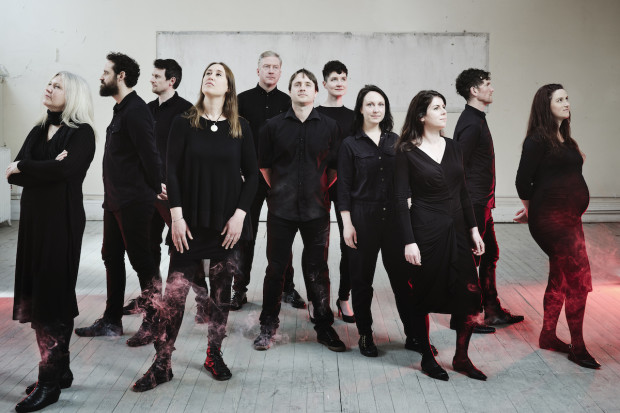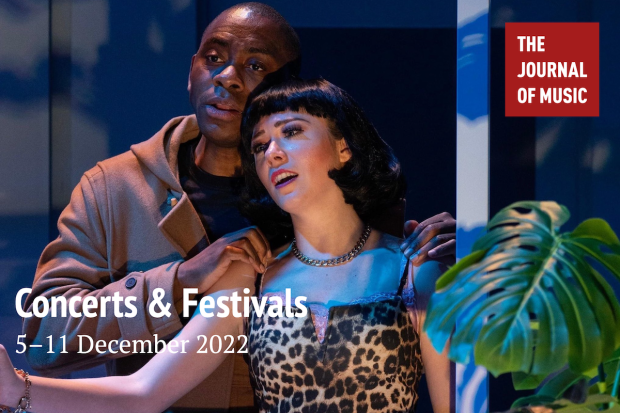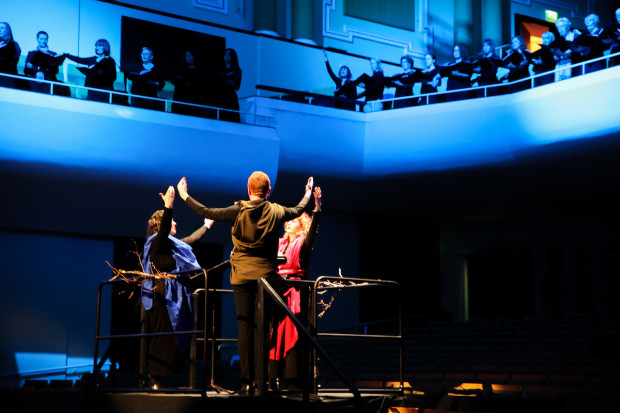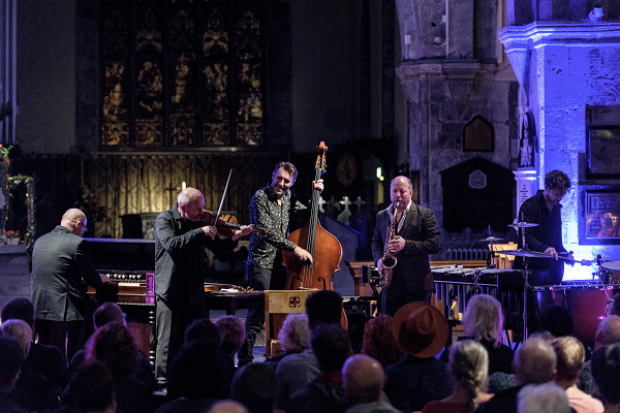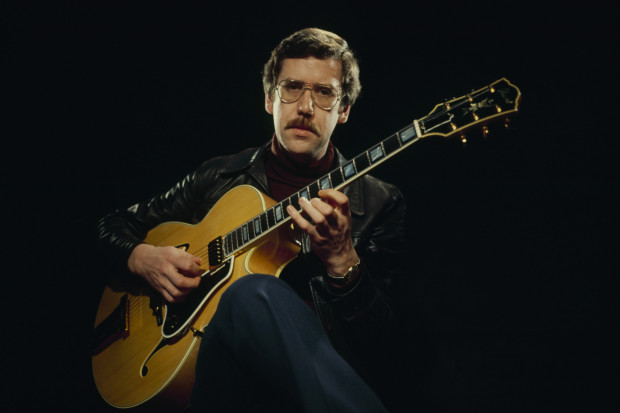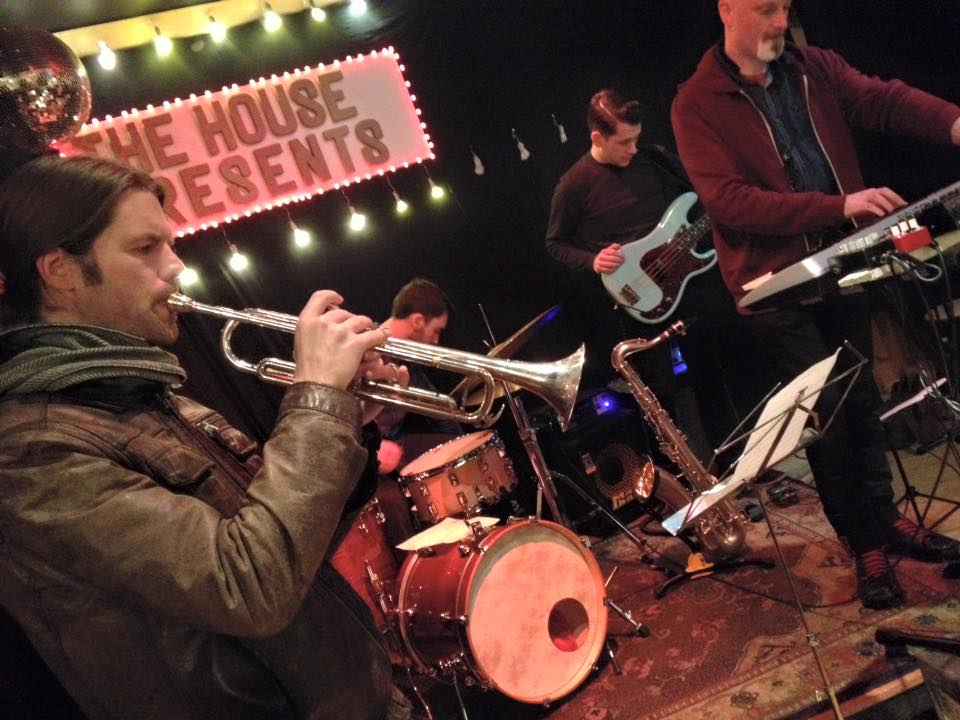
Sax Panther performing at The House Presents.
The Art Space: 5 Years of The House Presents
Salon-style multi-genre music events have been cropping up across Dublin, following the lead of the enormously successful Kaleidoscope Night. Current trends are taking this model and moving towards not just multi-genre but multi-disciplinary events: Listen at Arthur’s on Thomas Street has featured poetry readings and video footage alongside its central musical performances; Phonica at Jack Nealon’s on Capel Street has combined experimental poetry and music; and Staccato in Toner’s on Baggot Street focuses on spoken word supported by music.
These events all have two things in common – their dedication to presenting a combination of acts not normally seen together, and their setting, usually small bar or lounge spaces without formal staging and with an ‘intimate’ atmosphere. The line between participants and spectators is softened if not dissolved. In this way, city-centre venues try to replicate the feel and closeness of a small community gathering or a local session.
Where the artist and the audience are equal
The House Presents, established in 2012, brings this same atmosphere out of the city centre to a smaller, closer community. Annesley House, the bar that has hosted these monthly events for the past five years in North Strand in Dublin, is cold and bare with bright, moodless lighting, a functional if pleasant drinking hall that does not feel conducive to intimate music-making; but go up the stairs – cold and smelling strongly of the open smoking area – and you step into a room that doesn’t seem so far away in mood from the Odessa Club (where Kaleidoscope began). Upstairs at Annesley House is an inviting candlelit space with cabaret seating, warm red drapes and a small corner stage, even a cabaret-style electronic sign complete with white light-bulb border.
A lighting installation, designed by Jane Daly and Matt Dee, accompanies each event, reflecting the acts performing, creating an atmosphere and preparing the audience for what they are about to experience. Audience experience is close to the heart of The House Presents. ‘We try to create something where the artist and the audience are equal,’ explains Paula Lonergan, one of the organisers of the events alongside Nathalie Cazaux. At one of the events, last October, the lighting installation was low-key but effective: hanging on the drapes behind the stage were small clear plastic boxes containing small sculptures, illuminated in bright colours. While they usually prefer to find some common thread in the experience acts are offering, Paula described this event as more festive – ‘a bit of a mish-mash’ celebrating their return after the summer break – which was reflected in these playful light-boxes.
While the mix of acts that evening was likewise colourful, their progression throughout the evening felt a little jarring and disjointed. With a kind of accelerate-then-brake pacing, the acts drew you in close and pushed you away in rapid shifts of tempo that could easily have been alienating. However, there was a kind of hypnotic fascination to this that kept me willing to stay on board. If anything linked the acts of the night it was perhaps a loose connection to the tradition of storytelling – whether literally, as with comedian Ger Staunton, or through sense and impression, as with Andrej Kapor. Each act created characters of some kind in their sets, either as the natural outward face of their performance or as a deliberate constructed device.
Working the space
Opening the night I attended was We Raise Bears, an indie duo comprising Conor Miley and Sharon Murphy. We Raise Bears play a brand of rich indie rock that relies more on the emotive impact of heavily-layered voice and synth textures than on hooks. Though obviously still a young band, front man Miley was comfortable on stage and often introduced the context and content (such as anger at the Apple tax controversy) of their songs, though this left them feeling overwrought before they’d even begun. They also seemed to struggle somewhat to recreate in this small space what they evidently intended to be a loud and full soundscape. Their biggest asset, however, may be Miley’s versatile and intriguing voice, which, when bedded atop their of guitars and synth, helped place the band on a stylistic path that will lead somewhere between The Butterfly Explosion’s expansive textures, Villagers’ songcraft and Moonface’s vocal emphasis.
We Raise Bears were followed by Keith Burke, a singer-songwriter who seemed much more comfortable with the space and the intimacy that it afforded him. Making great use of this ease of communication, Burke told stories through nostalgic faux-Americana, with nods to the 33 bus route and romanticising summer days walking by the canal. Listeners were mostly entertained but certainly not challenged. Following this, a switch from music to comedy was a welcome change of direction, though Ger Staunton’s laconic style of storytelling sometimes led to missed beats and moments that fell a little flat.
The final act of the night, musician and spoken word artist Andrej Kapor, was by far both the most daring and the most magnetic of the night. Even though his performance presented quite challenging poetry, in a language that is not his first, to a – by now – late-night crowd, he was always compelling and rarely opaque. Alternating recitations of his own poems and reworked versions of well-known songs, his set was refreshingly open and spontaneous, and his ability to fluidly shape his intensity and manner on stage makes him an arresting presence. His poetry ranged from personal soul-searching to tales of interesting characters, all told with a confidence and relish in the ability of sounds, shapes and rhythms to convey his intent as much as the words themselves. With his hip-hop-derived rhythms and refrains like pop choruses, combining his poetry with song covers was a natural match that resonated with the audience – who even sang along with the chorus of his alternate version of ‘Hit the Road Jack’.
What it means to be a performing artist
Past acts have presented a similarly varied collection of approaches, genres and performance styles. Gothic singer-songwriter Larry Beau has been a semi-regular at Annesley House, the band Sax Panther have played there twice, and singers and solo musicians are a frequent pillar of House Presents sets, whether French chanteuse Caroline Moreau or DJ/producer D808. From the literary side, they have presented poets, writers and spoken-word artists such as slam poetry champion John Cummins and Dave Lordan, a poet who has collaborated with sound artists. There have been story-tellers, belly-dance groups and ukelele swing bands. What many of the acts, past and future, have in common is an interest in exploring what it means to be a performing artist in an environment where genre-lines are blurred.
While these acts bring their own fans, friends and family, the majority of The House Presents’ audience are from the surrounding area. Similar events in Dublin City tend to share some of the same regular concert-going audience, but very little of these seem to make it out to Annesley House. For example, after some recent success with a site-specific play The Grey Area (written by Paula Crowley), based on a piece of local history, The House Presents made a decision to further develop it. However, when they tried to get further support for expanding to other venues in the area, festivals they approached rejected it because it was too difficult a prospect to get audiences to go outside the city centre.
For Paula and Nathalie, hosting these varied acts so close to home is vital to The House Presents. For a few years pre-recession, a lot of artists moved into the area for the combination of reasonable living rates and closeness to the city centre, but though they lived there, they brought their art out to other places. In their words, you could be ‘living right next door and people wouldn’t really know what amazing artists they were.’
Those moments are important
There have also been times in the history of The House Presents when the confluence of location, timing and content have made for experiences that would be difficult, if not impossible, to replicate elsewhere, experiences that were highly personal, not only for Paula and Nathalie, but for the performers and audience members too. They speak with passion of an event that took place last year which was programmed around the early music instrumental group The Gregory Walkers – a ‘precious and beautiful group’ – a spoken word artist and a delicate twinkling starlight lighting display:
What was really amazing about that night was that at that time in our area all those terrible killings were going on [the murder of Gareth Hutch on 24 May], literally a few minutes from the door, and the police presence was oppressive. Sirens were constant up and down the road. I was just aware of this unbelievable atmosphere in our venue, of hearing Carolan played so beautifully, and outside you could hear the sirens. The contrast made for such a lovely moment: everything going on is so ugly outside, and we can hear it from inside this wonderful space. Those moments are important, and everyone in the room felt it too.
For more on The House Presents, see https://goo.gl/TjWvMl
Published on 5 March 2017
Anna Murray is a composer and writer. Her website is www.annamurraymusic.com.










